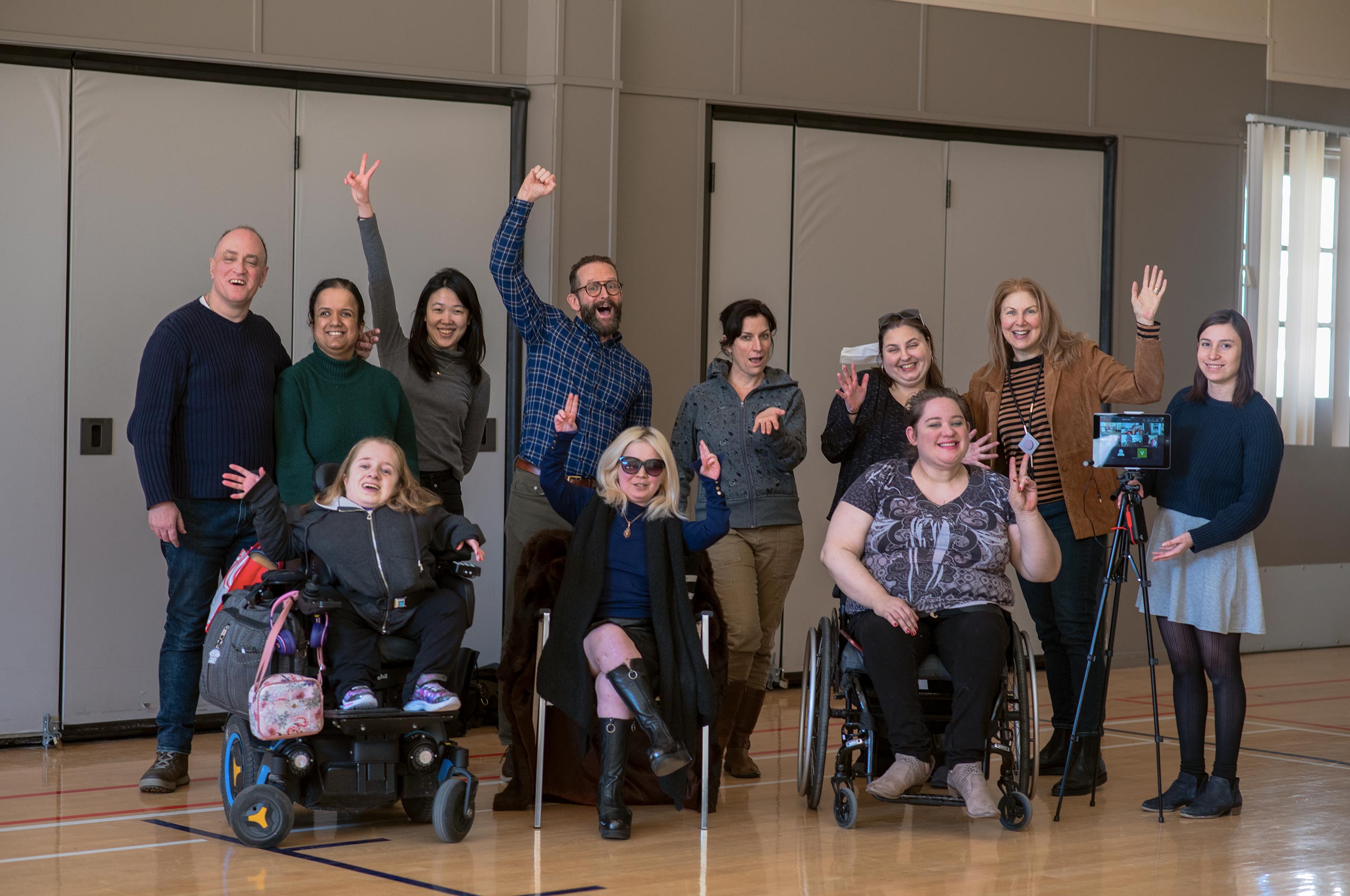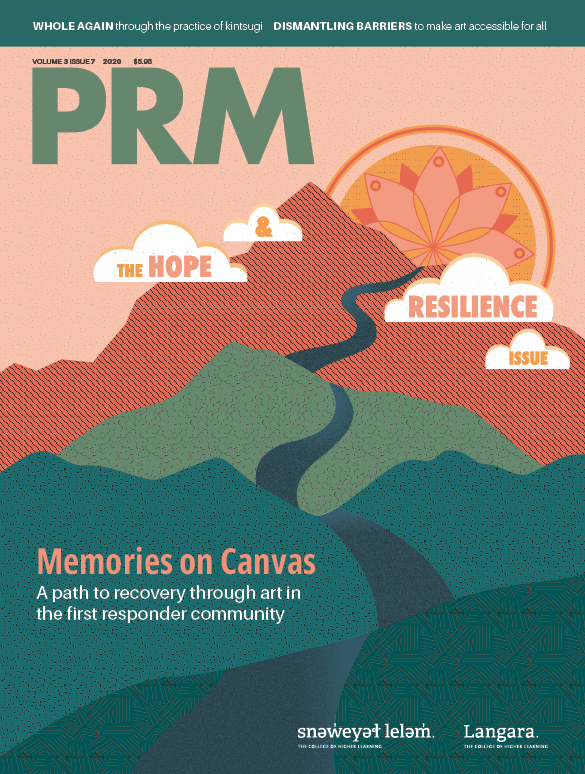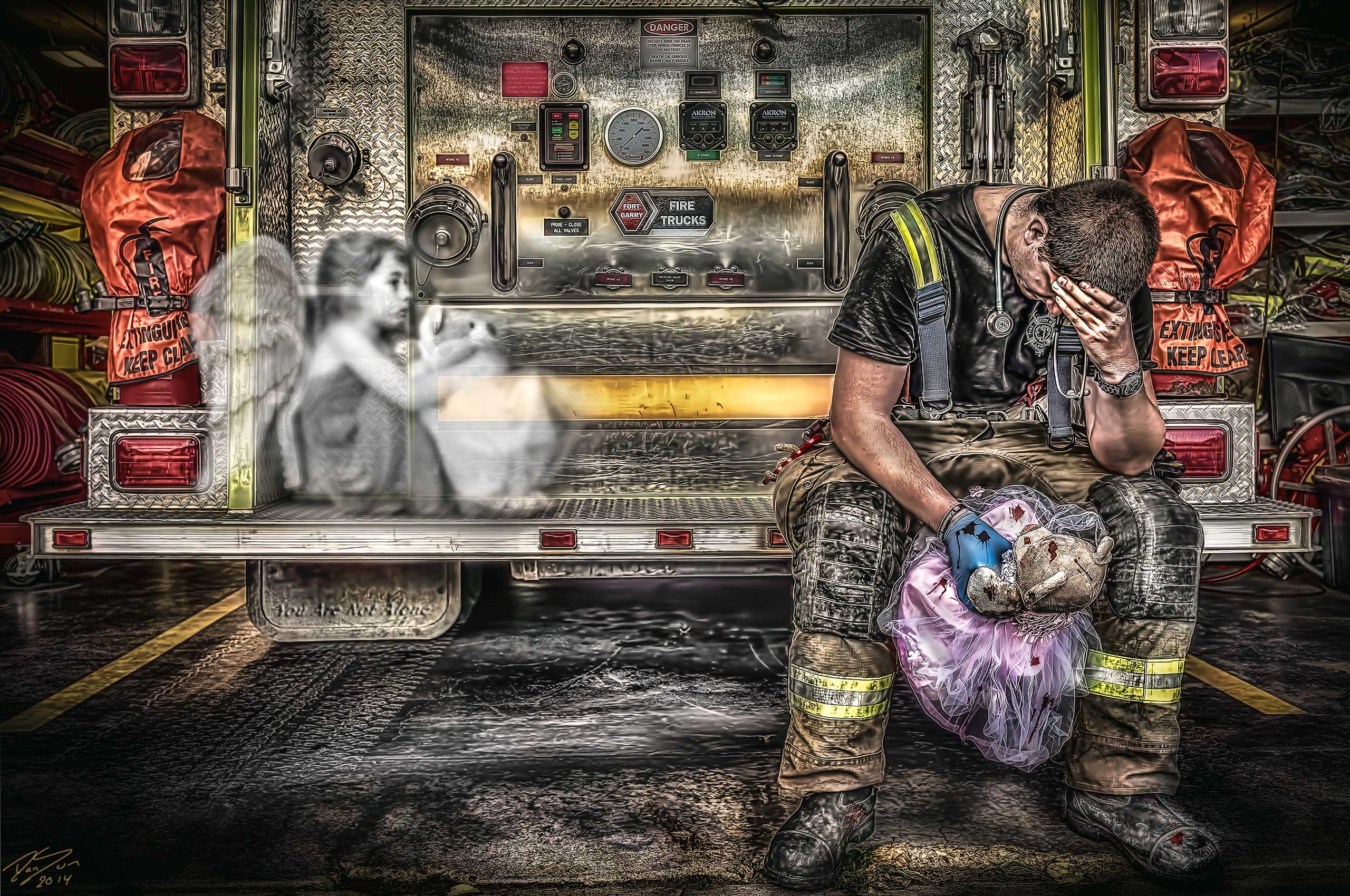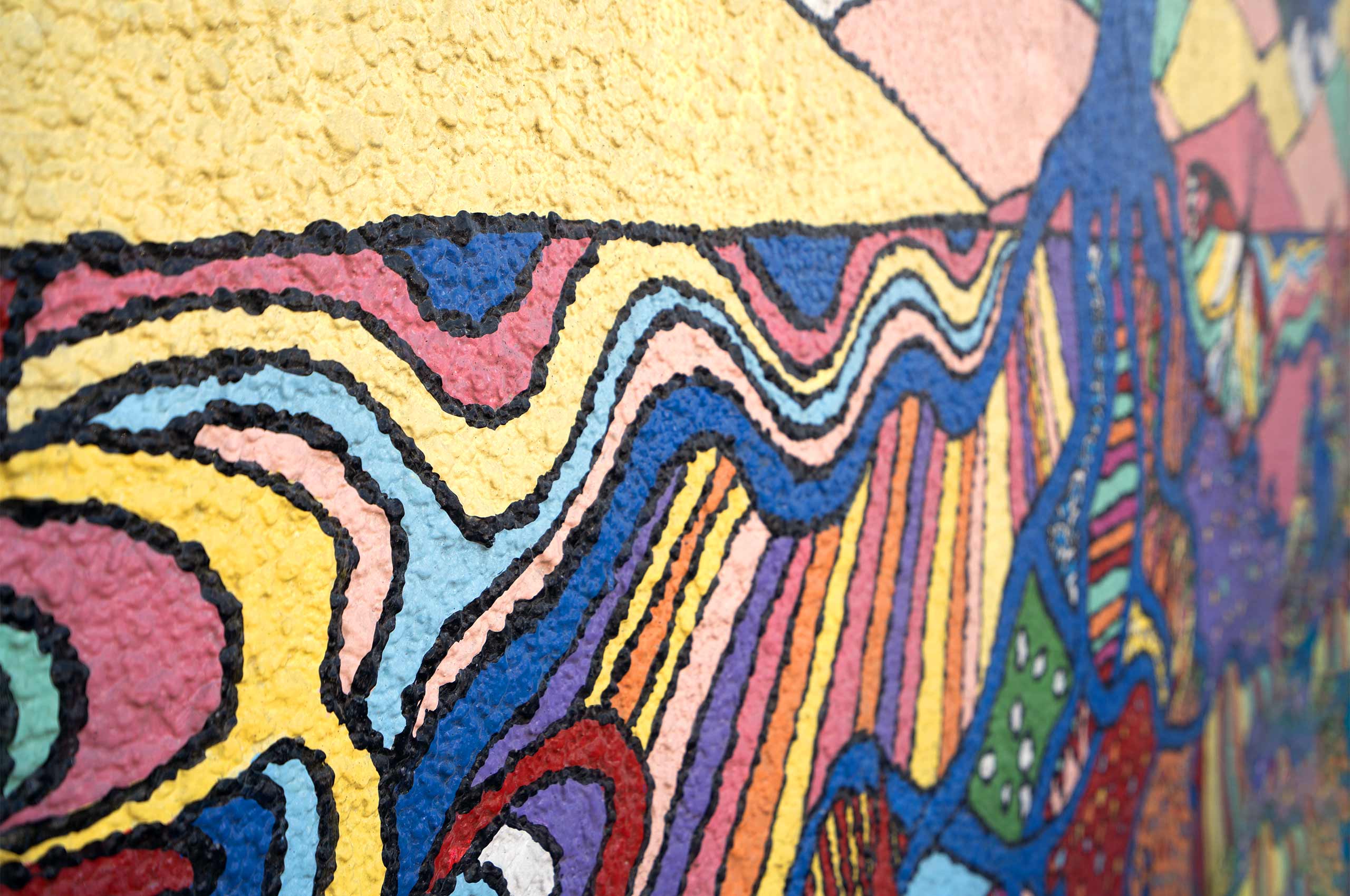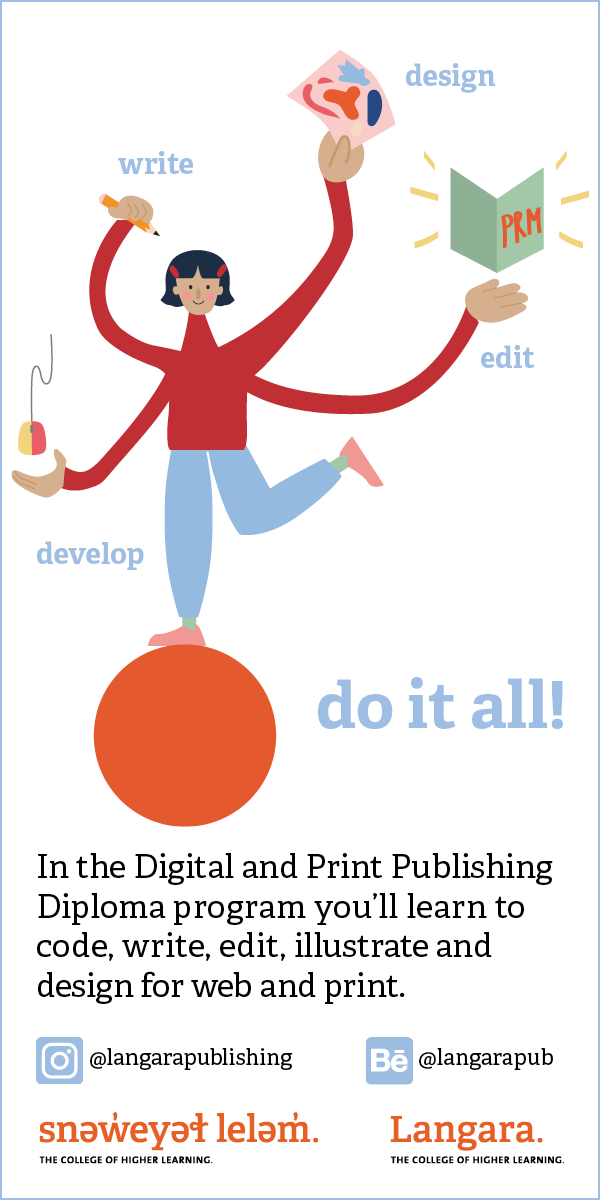When Amy Amantea unexpectedly lost her sight at 24, she assumed she would never be able to enjoy the arts again. At that time, Amantea was passionate about visual arts and an aspiring actor. With no sight in her right eye, and about two percent in the left one, and no central vision, her sight loss changed much of what she took for granted: “When I lost my sight, I actually thought to myself that there’s no way I’ll ever be able to experience [the arts] again.”
To describe what it is like for how her sight works now, Amantea uses the analogy of a jigsaw puzzle. “For me, my jigsaw puzzle is missing lots of pieces. And so, if you’ve got a puzzle… and you take out a bunch of the pieces, sometimes you can’t tell what that puzzle is creating. Then imagine that the pieces that still exist are a little bit fuzzy.”
Sometimes when Amantea looks at familiar objects, such as a tree, she thinks she can see it perfectly, but doctors explained to her that the retina is part of the brain and not part of the eye. This means that when she looks at certain objects, the brain can fill in the gap of missing information based on what she has seen before. It is not the same for everyone who is blind or partially sighted. “Blindness is like a fingerprint,” Amantea explains, “and it’s unique to everybody who experiences it.”
After losing her sight, Amantea had to face many challenges, including simple tasks like brushing her teeth and matching socks. “You’re learning everything from scratch,” she says.
Since the beginning, one of her biggest challenges has been people asking her how she lost her sight. While Amantea understands the curiosity, these conversations consistently remind her that she is different, which is not what she wants to focus on or finds important, “and so, the conversation about, ‘Are you enjoying the weather today?’ as mundane as that sounds, is such a ‘normal thing’ that it doesn’t remind me every two seconds that I’m different.”
Indeed, every human being is unique, and the most unique thing about a person who is blind, is not their blindness. Talking with Amantea makes it apparent that she does not want to hide her disability, but she also does not want it to limit her life.
To keep her passion for art alive, Amantea initially attended plays with friends and family. Yet, she found the performances hard to follow and often fell asleep. “A really expensive 2-hour nap,” she jokes. It was when she joined VocalEye that she realized she could access art in a whole new way.
VocalEye
VocalEye is a non-profit society that was established in 2012. The first of its kind in Canada, VocalEye strives to make visual art more accessible to the blind community: notably by providing live description of both art and cultural events. As a member and the community outreach coordinator, Amantea explains the society’s importance: “People who are blind or partially sighted have lots of barriers to participating in our local arts and cultural scene.” She goes on to say, “VocalEye really looks at what those barriers are and how we reduce them, so people who have sight loss can participate as anybody else can participate.”
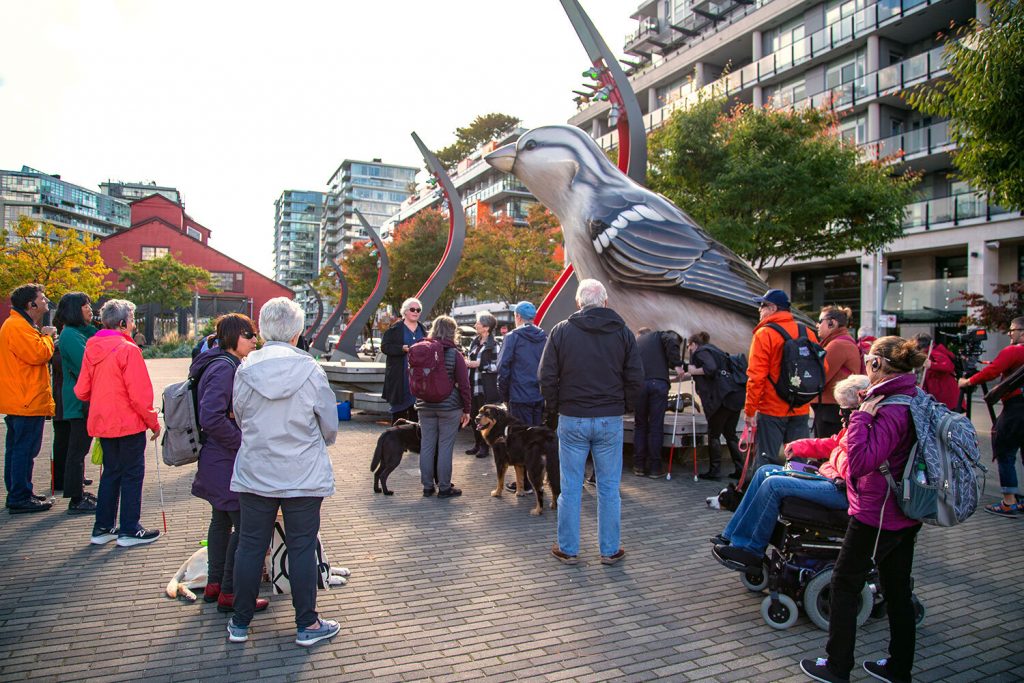
VocalEye originated from Kickstart Disability Art and Culture (KDAC), an organization that introduced live audio description to Vancouver in 2009. Steph Kirkland, the founder and executive director of VocalEye, was working as a theatre director and recording textbooks for post-secondary students, when KDAC offered training in The Art of Live Description. “It was a strange coming together of these two things for me… with the theatre world and transcribing for the blind.” After providing live description for various theatre productions in Vancouver over the next three years, KDAC transferred the live description program to Kirkland in 2012. And VocalEye was born.
The Art of Description
Composed of sighted and non-sighted volunteers and employees, VocalEye provides live description for art and cultural events, including gallery tours, public art walking tours, and touch tours. Apart from their live events, VocalEye also offers training for describers.
“A describer is trained in the art of description,” explains Kirkland. “They fill in the blanks for the listener of important visual material, by performance or event. So, what they need to do is to discern what are the most important elements in the show that need to be described.” In order to create a description script, a describer must be familiar with the story, which often means they attend a show up to three times. They take notes about information not conveyed in dialogue or sound that would be important to describe. The describer’s main challenge is to communicate in a way that stimulates the listener’s understanding, while at the same time leaving enough room for the imagination to be active.
Describers must also find the right balance between describing too much and not enough. For instance, in a two character show, the describer can take time to describe each actor. In a show with ten characters, the describer has to decide what makes each character stand out (physical attributes, status, costume, and mannerisms) and focus on those characteristics. Kirkland points out that the trap of describing is to over describe. “And we all did that at the beginning,” she laughs. She goes on to explain, “the people who should be describing are the people who have the most experience in that area.” For instance, people who are experienced in visual arts should describe visual arts, while people who are experienced in dance should describe dance.
During a show, a small, handheld receiver and earpiece provide the live description to VocalEye users. The describer, usually at the back of the theatre, describes important information and actions between lines of dialogue. In a show without dialogue, the describer has to choose which parts of the experience to share and what can be left to the listener’s imagination. However, during events such as public art tours, the attendees have the chance to ask for more detail and can then decide what is important to be described for them.
Attendees also have the opportunity for a personal experience during touch tours. These tours allow an individual to interact with and understand objects by touch. The items explored must be so uncommon that they could not be understood by verbal description alone: “Nobody’s going to hand you a spoon and say this is part of the touch tour,” says Amantea, “unless what they’ve done with the spoon is made it so unique that you have to experience it to understand what it is.” Puppets, costumes, time period pieces, and weaponry have been popular objects included in these tours.
VocalEye has recognized that incorporating other senses adds to an individual’s experience. “My sense of touch has certainly become more important than it was when I could see, because sight is your primary source of information,” Amantea explains. “But since I don’t have that to rely on, now I’m using my fingers, and I can get some of the small details. Whereas I wouldn’t have been able to recognize those before, but now I’m looking at them with my hands.”
Describing is a real art. Like any art, it teaches a new way of experiencing things. For the describers themselves, the process can enhance the way they see the world. “The way I look at everything has changed. And just the act of looking, and just because I can see, doesn’t mean that I do,” says Kirkland about her experience as a describer. “I’m hoping it’s making me a bit more attentive to things, and also more aware of how we all see things differently, and we all express things differently.”
Because description is based on a describer’s perspective, a blind person has “a really interesting experience, which is I get somebody else’s perspective so to speak,” explains Amantea. “And not in a way where they’re telling me what I should experience, but by osmosis they’re telling me how they experience it, and then I sort of get to decide.”
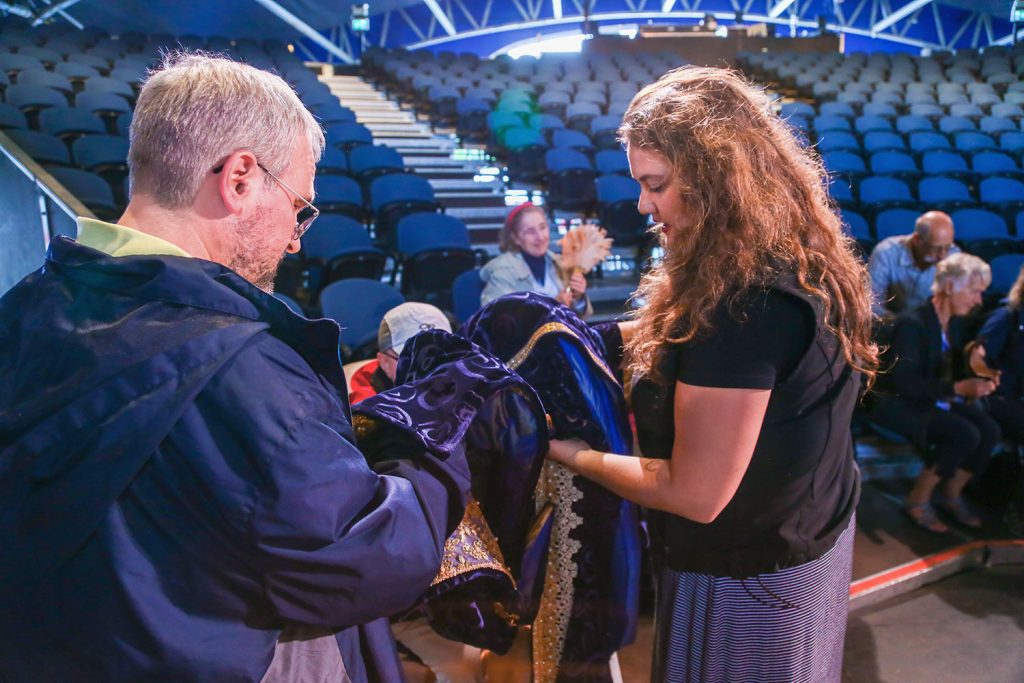
Being a subjective process, the art of description is constantly evolving, aiming to serve the blind community as best as it can, with a full and immersive experience in art and culture. After each event, VocalEye invites its attendees to provide feedback, so the organization can identify ways to improve the experience in future events.
Beads and Stage Lights
As “an artist of opportunities,” Amantea does not just enjoy art: when she finds something that she likes and wants to experience, she dives into it. Self-titled “The Blind Beader,” she designs and handcrafts her own line of beaded jewellery, including earrings, bracelets, and necklaces. She specifically designed a series for VocalEye using Evil Eye glass beads, with all proceeds going to the organization.
With a love for the stage, Amantea continues to work as an actor. She is involved with Realwheels Theatre, an organization that produces theatre performances with the disability community. Along with other productions, she was part of a stage show called Sequence, where her character, Dr. Guzman, was losing her sight. To play this role was a very exciting opportunity for Amantea. “It’s kind of interesting,” Amantea reflects, “having lost my sight has actually given me a gift. It’s made me unique in such a way that when opportunities come I’m part of the niche, instead of part of the majority.”
Moving Forward
Year after year, accessibility is gradually improving for the disability community. In Canada, acts have been passed in various provinces, including the Accessibility for Ontarians with Disabilities Act in 2005, the Accessibility for Manitobans Act in 2013, and the Nova Scotia Accessibility Act in 2017.
Many organizations are involved in working with disability communities, and cities are trying to enhance infrastructure to increase accessibility. While live description is common in the United States because of the Americans with Disabilities Act, which imposes legislation that requires art events to be accessible, Canada is working on implementing further legislation to remove barriers for the disability community. Bill C-81, The Accessible Canada Act, passed the House of Commons in May 2019 and became law on June 21, 2019. According to the 2019 news release on the Government of Canada’s Employment and Social Development Canada website, C-81 will “transform how the Government of Canada addresses accessibility across the country.” While C-81 states that federally regulated organizations must develop plans for, and adhere to, accessibility requirements, Amantea is concerned about the implementation: “It doesn’t quite have any feet yet, so we won’t know what our Canadian act of accessibility will look like fully, but maybe that will change things.”
Individuals and organizations are working toward a day when all communities will be able to access not only arts and cultural events, but every experience life has to offer. One thing should never be forgotten: to ask the communities what their needs are. Nothing About Us Without Us is a movement that promotes open discussion with the disability community to understand their needs, accessibility included. The main message is that no decision about disabilities should be made without consulting the disability community.
While her life has changed drastically over the 12 years since the loss of her sight, Amantea maintains a grateful mindset. “If there’s been a gift in the loss of my sight—and some people can’t understand what I mean by that—but I have had opportunities, I have met people, I have done projects, I have experienced things that I never would have had the opportunity or desire to have done before. Or even thought about.”





